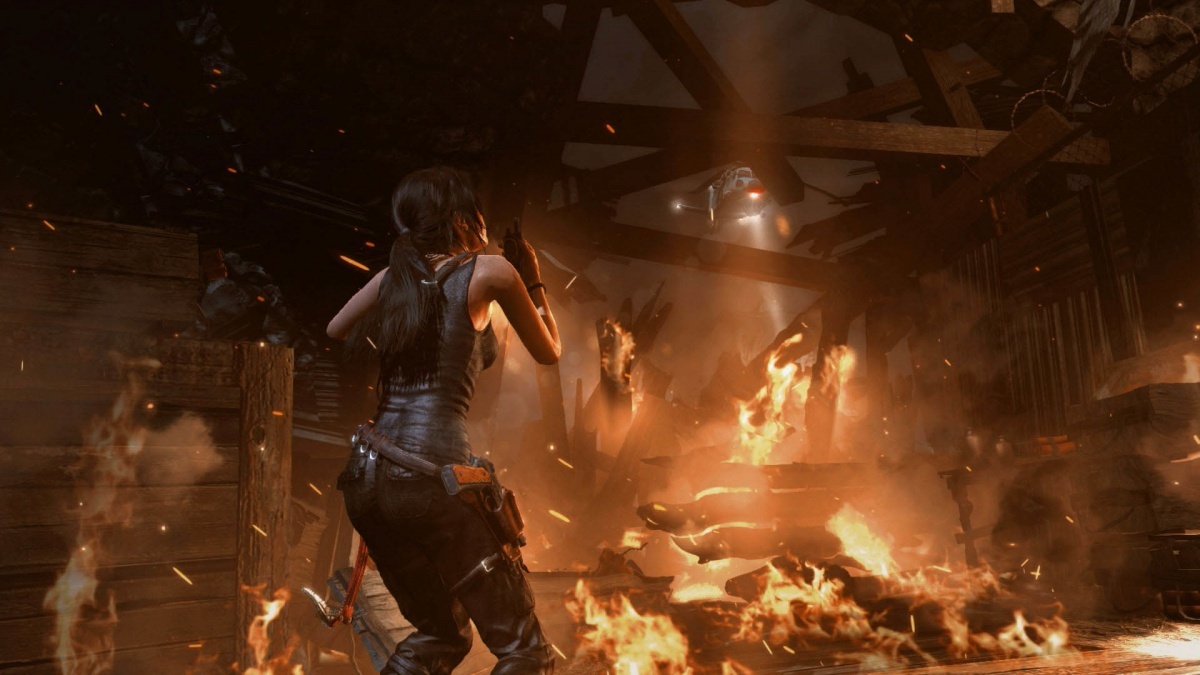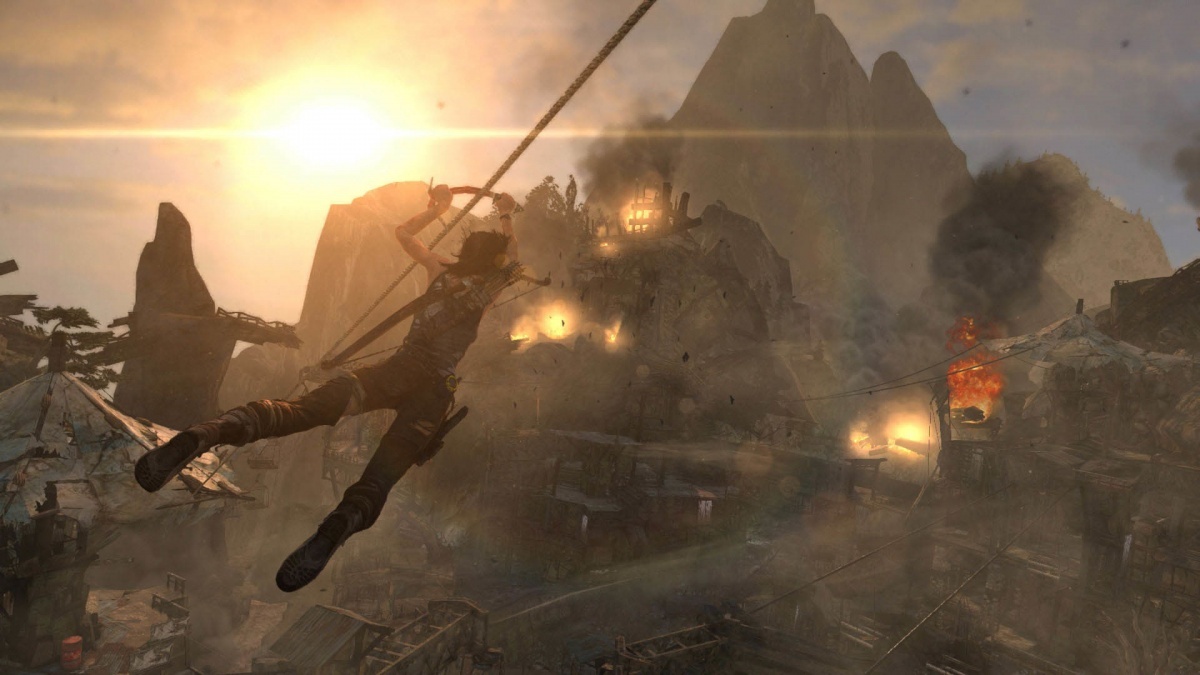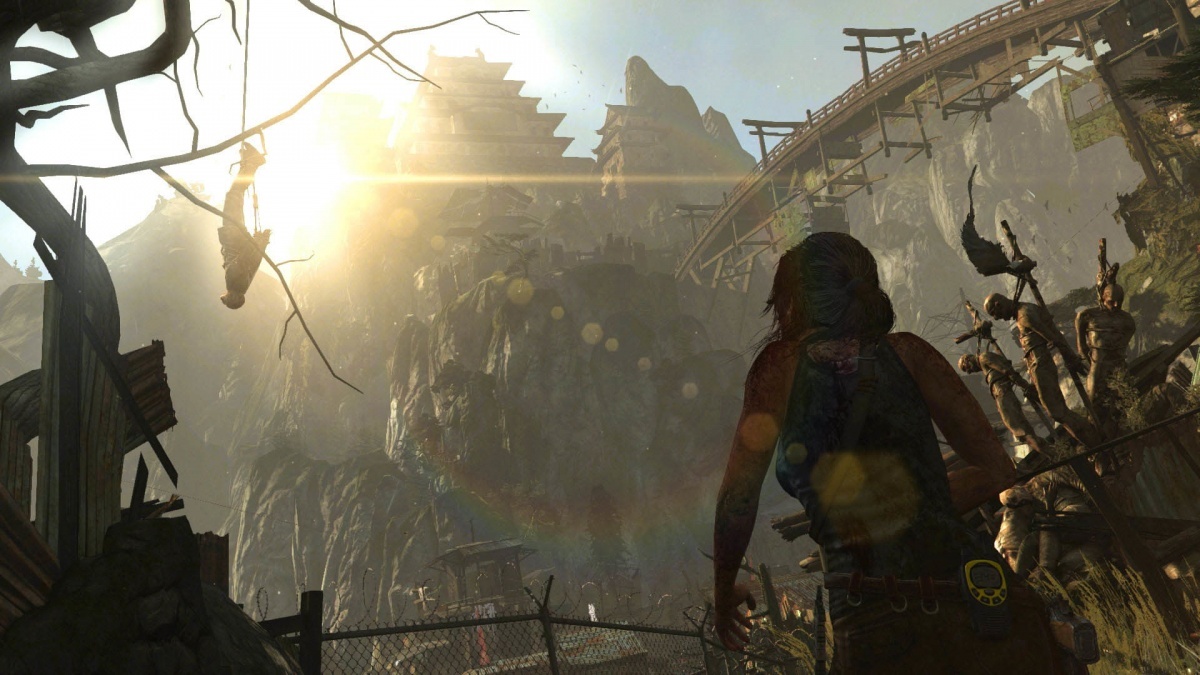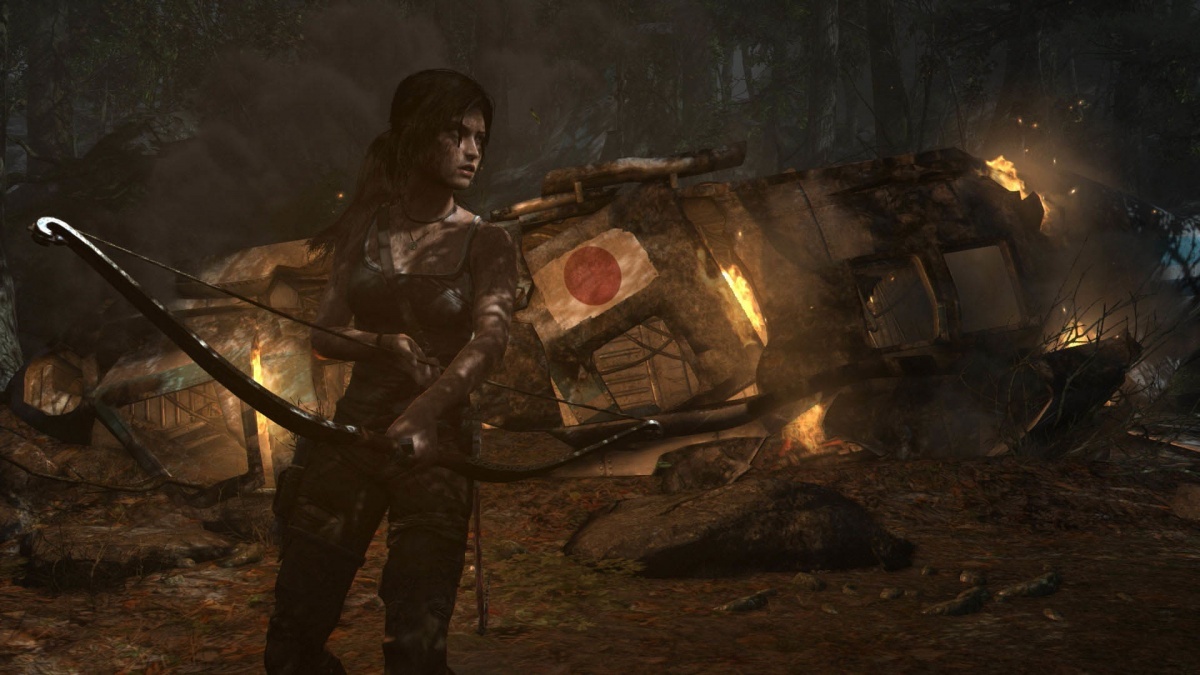Tomb Raider: Definitive Edition (PlayStation 4) Review
By Aria DiMezzo  16.12.2015
16.12.2015

Lara Croft's identity has changed drastically over the years, and her identity has consistently been the clearest example of how women are portrayed in video games and how that has changed over time. Although she began as mostly just a fan service character, Lara steadily grew and developed into a gaming icon on the same level of Samus Aran, Master Chief, and Leon Kennedy—perhaps not the best-known, but certainly one of the better-known. There is nearly unanimous agreement that the Tomb Raider series lost its way, however, and in 2013 Crystal Dynamics presented a reboot of the series known only as Tomb Raider, thereby ensuring confusion would reign in the series' chronology. Does the reboot redeem the series that began to fall apart? With a climbing axe in one hand and a pistol in the other, Cubed3 descends into the caverns to find out.
Lara Croft has become an absolutely brilliant character, and the arc she receives in Tomb Raider has been long overdue. Crystal Dynamics has gone on record as saying that the team designed the game hoping to give players the sense of wanting to protect Lara, and they went out of their way to craft her into a believable character. While that statement is pretty condescending coming about a series established almost entirely on fan service, it's hardly relevant in regard to the game itself, except that it shows that they did craft Lara's character to be realistic on purpose.
There are some missteps on the journey, however; Lara doesn't undergo "character development" as much as she does "character upheaval." In the span of about five minutes, Lara goes from being rescued by a huge, burly guy to pulling wooden shards from her body; in an identical time frame, she goes from struggling with killing someone to such a degree that she almost doesn't pull the trigger, to mowing enemies down. This does not change the fact, however, that Lara Croft remains the biggest alluring factor for the Tomb Raider series, and the excellently-delivered voice acting drives in a sense of realism.
Realism is generally another place Tomb Raider excels at, and it takes its place alongside Dragon Age 2 as one of the most immersive games out there. For the first hour, Tomb Raider pulls players into the situation, into Lara's struggles, into Lara's shoes, and into the game. It is handled masterfully and creates an almost perfectly immersive experience.

Then it totally shatters the immersion with metagame elements that cannot be ignored. The borrowed Detective Mode from the Batman: Arkham games is the only metagame mechanic not really forced onto players, and those who prefer to actually explore and play the game do not have to use it—most of the time. Sometimes, however, if a player spends too much time exploring, the game activates Survival Mode and shows players exactly what to do.
As another example, early in the game, Roth tells Lara that everyone is meeting at his location, and so she should come to him. The cut-scene ends, and a message appears in the bottom-right corner of the screen that says, "Quest objective added to map," or something to that effect. Any sense of immersion players have at this point is irretrievably shattered, because Tomb Raider forces metagame mechanics onto the player. In reality, pressing a button to open a map is no better than pausing and searching for a map on Google; both take players out of the actual game. Worse still, there is no other way to learn where Roth is.
When Tomb Raider feels real, it is at its best, and it is easy to see potential for a perfect score. Unfortunately, far too many elements interrupt the gameplay far too frequently for the adventure to feel real for long. Crystal Dynamics' failure to remember that information that the player needs should be communicated through conversation between characters is egregious, but the failings do not stop there.
The overall vibe evoked by Tomb Raider is that a marketing department with dollar signs in its eyes and clipboards full of focus group data were allowed too heavy a hand in design, because the only part of Tomb Raider that feels like a cohesive unit is the story. It is pretty bare and not very interesting, but it is redeemed by Lara Croft and the care that Crystal Dynamics put into crafting her as a believable character. In fact, the only aspect that redeems Tomb Raider is Lara Croft.

Playing this is like going on a guided tour through an amusement park, with moments of Final Fantasy XIII-esque "exploration" here and there. There is only one path through, and Tomb Raider has the same "simply walk through a gigantic tunnel" problem that FFXIII had; the only difference is that Tomb Raider has larger set-pieces. Collectibles are predictably placed in alcoves that branch off the main path, but these branches quickly expire into dead ends, since allowing the player to wander down an alternate path is far too risky. They might get lost, after all, and then might have to explore.
Back to the amusement park. After a few minutes of these "exploration" bits, Tomb Raider stops and proudly announces the arrival at the next ride. "This is a survival horror bit," Tomb Raider proclaims, "So turn off the lights, crank up the volume, and have fun!" A short experience on the ride later, and the guide continues onto the next. "This is a cover-based third-person shooter bit!" goes the announcement. "Lock and load, and have fun!" For the next fifteen to twenty hours, this repeats, with different "amusement park rides" along the way.
Part of the problem is that none of these disparate gameplay elements actually have anything to do with each other. It's all well and good to have a levelling system in a third-person shooter, and Mass Effect did that to critical acclaim. The system doesn't work so well, however, when players can meticulously aim for headshots. Unlike most RPGs, success and failure in Tomb Raider is based more upon skill than it is a system of stats and values that have to be raised. It isn't inherently bad to have a game where a 20% damage increase is received by purchasing a perk—games designed around such mechanics can work very well. It's only a problem when success and failure actually depend on the player's ability to aim a reticule; the result becomes a completely inconsequential level and perk system superimposed on top of a game that it isn't affecting. It's just there to be there, presumably because "other games have levelling systems, and people buy those, so people will buy Tomb Raider if it has one!"

This is equally true of the crafting system. Although it's not really a crafting system, because items and weapons can't actually be created, it is a type of weapons modification system colloquially called a "crafting system." It's also irrelevant and dull. Players collect salvage throughout the world, by looting enemies and animals, and by breaking open crates, and the salvage is used to craft modifications for weapons. Blueprints, basically, for weapon upgrades are hidden throughout the world and on enemies, and without them weapons can't be upgraded. How Lara is modifying a pistol with salvage that she got from looting a rabbit is anyone's guess. Of course, this can also be ignored, because the net impact on the actual gameplay is nil. It, too, seems to only be present because "other games have crafting systems, and people buy those, so people will buy Tomb Raider if it has one!"
Even without a long history with the Tomb Raider series, it is easy to see that the franchise has lost its way and lost its soul, because the 2013 reboot of Tomb Raider has no soul. It's a mix-and-match of disparate, unrelated gameplay mechanics carelessly superglued together, not interwoven together, and only Lara Croft herself picks up the slack. The analogy of being taken on a tour couldn't be more appropriate, because Tomb Raider's impatience with players and anxiousness to activate Survival Mode, whether they like it or not, is akin to an overly eager child lurking behind the couch, watching and waiting, to see that, for even a split-second, the player didn't immediately know what to do and how to do it, so that the child could jump up and down, shouting, "This is what you have to do! Listen to me! Hey! Just do this! It's easy! Let's go! Stop wasting time! Go, go, go! Let's get a move on! Hurry up!"
Alternatively, it's like the amusement park tour guide saying, "Okay, you've enjoyed the ride long enough. Come on, we have a schedule to keep. We don't have time for you to dilly-dally back here for the next six seconds. We have to get to the third-person shooter ride now, and then we have the survival horror ride! Hurry up!"

Cubed3 Rating
Subpar
The different gameplay elements that comprise Tomb Raider are very well done, and they are a lot of fun. During the TPS parts, Tomb Raider is competent. During the survival horror parts, Tomb Raider is competent. During the survival crafting parts, Tomb Raider is competent. This doesn't leave the whole package as competent, though. Even if someone used the best noodles possible, the best chocolate syrup, a lavish Lamborghini steering wheel, and a $900 pair of shoes, a lasagne made out of these ingredients wouldn't be very good—even if all the different parts are high quality. Tomb Raider needed someone to stand up and tell the marketing department that disparate gameplay elements weren't going to be shoehorned in simply to increase sales by 0.025%. Lara Croft does a wonderful job of redeeming Tomb Raider, and is the only reason it's playable, but it's only marginally more fleshed out than the myriad of mini-game collections found for the Kinect and Move.

![]() 4/10
4/10
![]() 8/10
(1 Votes)
8/10
(1 Votes)
 Out now
Out now  Out now
Out now  Out now
Out now  Out now
Out now Comments
Comments are currently disabled

 Sign In
Sign In Game Details
Game Details Subscribe to this topic
Subscribe to this topic Features
Features





 Top
Top

